How to craft an effective social media content strategy
Table of Contents
The content you post on social media can turn your brand into a household name and your followers into fans. This kind of impact only comes from having a solid social media content strategy.
The best way to stand out on social media is to identify specific goals, create valuable posts that align with them and distribute the right content on the right platforms.
There isn’t one cookie-cutter social media strategy that’ll guarantee success. Your strategy will differ depending on your industry, audience and performance over time. There are, however, specific ways to build a long-term plan that grows your brand and business.
In this article, you’ll learn how to create a content strategy for social media.
The 2024 Social Media Content Strategy Report
1. Identify and set goals
Social media content goals align your posts with specific business outcomes like increasing brand awareness, driving website traffic, or generating leads. Start by identifying which marketing objectives social media should support, then create measurable targets for each platform.
This process involves digging into how social media contributes to your overarching marketing goals, along with some audience research.
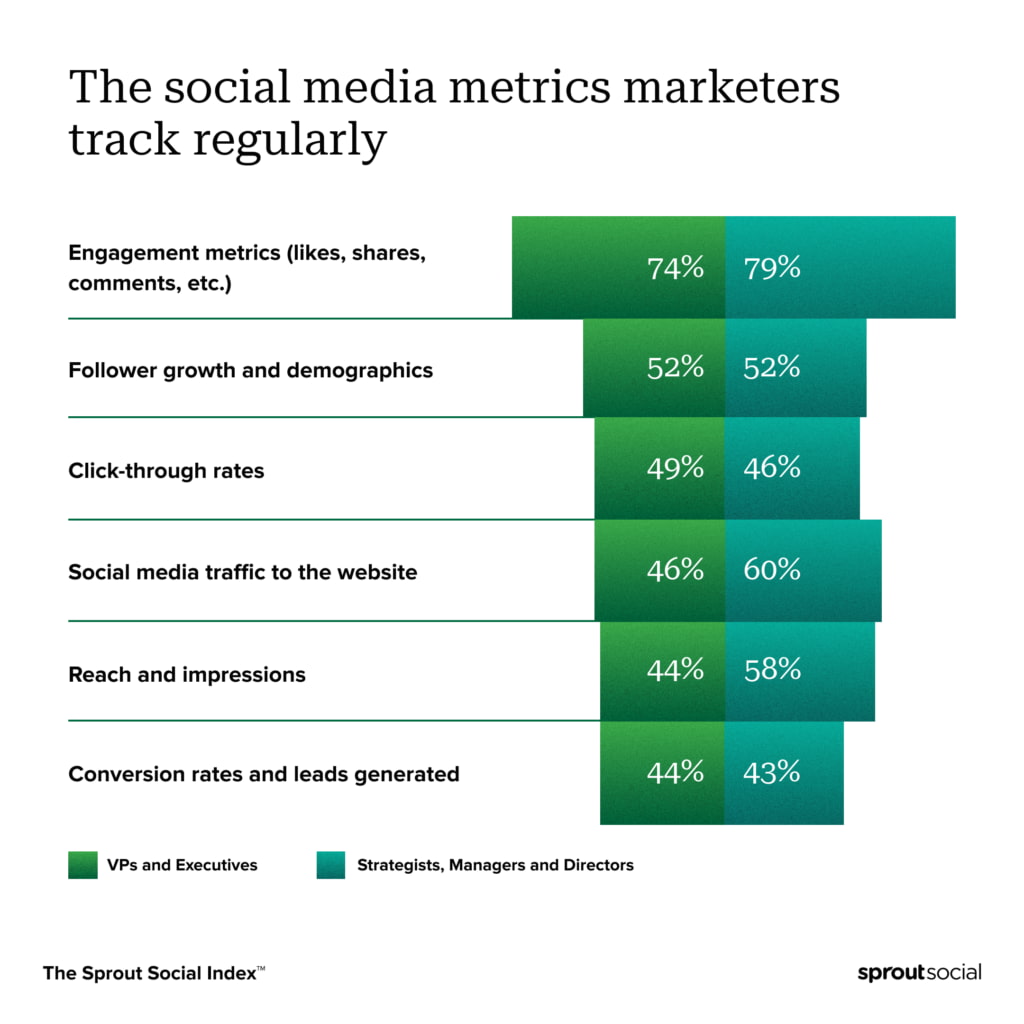
Get clear on your marketing goals and how you want your social media content strategy to serve them. The more specific your marketing goals are, the better you’ll be able to tailor your social media content to meet them.
For example, say your main marketing goal is to convert more sales from social media. Your strategy should incorporate publishing and promoting posts that move people to a landing page or another part of your social media marketing funnel.

2. Research your audience
You can’t create great social content without knowing who it’s for. Having buyer personas for social—or representations of your ideal customers—will help guide your social media content plan.
Start by using your data to surface basic demographic information like age and location. Then, gather insights about how your ideal customers talk about your brand, industry and products—this will help you paint a clearer picture of your target audience.
Sprout’s Social Listening solution helps you take this further with powerful AI and machine learning (ML) technology. These AI insights provide a deeper understanding of your target audience and their preferences, enabling you to create more effective content.
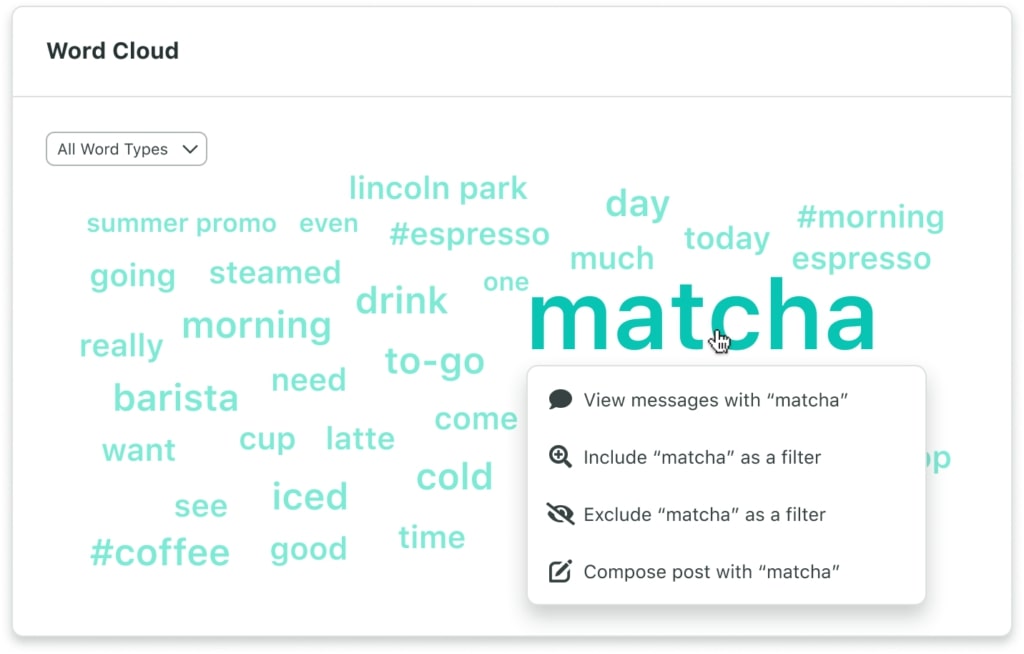
For example, Sprout’s AI-enabled Query Builder provides smart suggestions that build upon existing Listening Topics to capture the millions of conversations that can happen around a key topic.
3. Analyze your social media competitors
To understand how your social media content strategy is performing, you need to look beyond your own data. A competitive analysis will help spark ideas for your content and create better benchmarks and goals for your strategy.
Analyze competitor social profiles by focusing on the following questions:
- How active are your competitors on social? What platforms are they most active on?
- What types of content do they publish?
- How would you describe their brand social persona?
- What are their audience engagement practices like?
For quantitative data, the right competitive analysis tool will simplify the process of gathering insights from your competitors—such as average engagements, growth rates and top content—by automating data collection. This helps you establish data-driven goals and strategies for creating better content.
4. Audit your current social content
Once clear on your audience and goals, it’s time to conduct a social media content audit.
A content audit is one of the best ways to know how to create a performance-optimized content strategy for social media. This will help you substantiate what you think is working well with quantitative data that shows you how each post performs.
Review which posts performed well, which didn’t and what you shared on each platform during a specific reporting period. The metrics you present in your social media report should align with your content goals. For example, if one of your goals is to improve brand awareness, focus on the posts that generated the highest and lowest impressions or reach on each platform.
You can analyze your data using a social media tool, or by exporting each platform’s analytics into a spreadsheet. Facebook, X, Pinterest Business and LinkedIn Business accounts let you easily export your post and page analytics directly from the platform.
Key audit insights to analyze:
- Voice alignment: Does your underperforming content match your established brand voice?
- Audience relevance: Are you addressing topics your audience cares about?
- Format trends: Educational and entertaining content drives 66% higher engagement according to The 2024 Social Media Content Strategy Report
- Platform optimization: Which platforms deliver your highest engagement rates?
Some posts serve to help you meet bigger marketing goals. But even promotional content should be on brand and true to your voice. Remember: Your audience began following you for a reason. Stick with your unique voice and style as much as possible and create content that authentically markets your brand. For example, the Oklahoma Department of Wildlife Conservation has a witty, comedic voice on X (formerly known as Twitter)—a voice that not all similar organizations share.
If you’re not sure what your brand voice is, learn more about fine-tuning your brand’s social persona.
Targeting every social platform dilutes your impact. Focus your resources on the platforms where your audience is most active and engaged.
5. Choose the right platforms and content types
A winning strategy isn’t about being everywhere. It’s about being where it counts. Your audience and competitor research tells you which social media platforms matter most to your brand.
Focus your energy on the platforms where your audience is most active and engaged. This data-driven approach ensures your content reaches the right people, maximizing your impact without stretching your resources thin.
| Platform | Best Content Types | Optimal Post Frequency | Key Features to Use |
|---|---|---|---|
| High-quality visuals, Reels, Stories | 1-2 posts daily | Stories, IGTV, Shopping tags | |
| Professional insights, industry news, thought leadership | 1 post daily | Articles, polls, LinkedIn Live | |
| TikTok | Short-form video, trending audio | 1-3 videos daily | Trending hashtags, effects, sounds |
| X (Twitter) | Real-time updates, conversations, news | 3-5 tweets daily | Threads, polls, Spaces |
| Community posts, videos, events | 1 post daily | Groups, events, Facebook Live |
6. Develop a social media content plan
This is where you can have fun with data-driven creativity. We already mentioned that short-form video is extremely popular—but when crafting your social media content plan, think back to the social buyer personas you set up, and think about what formats they’re likely consuming. If your audience is on TikTok, you’ll want to have a plan for getting more TikTok views and engagement on your posts.
Change up the types of content you’re publishing, as well. According to the Sprout Social Index™ 2023, consumers want to see more authentic, non-promotional content along with posts that promote transparency on business practices and values.
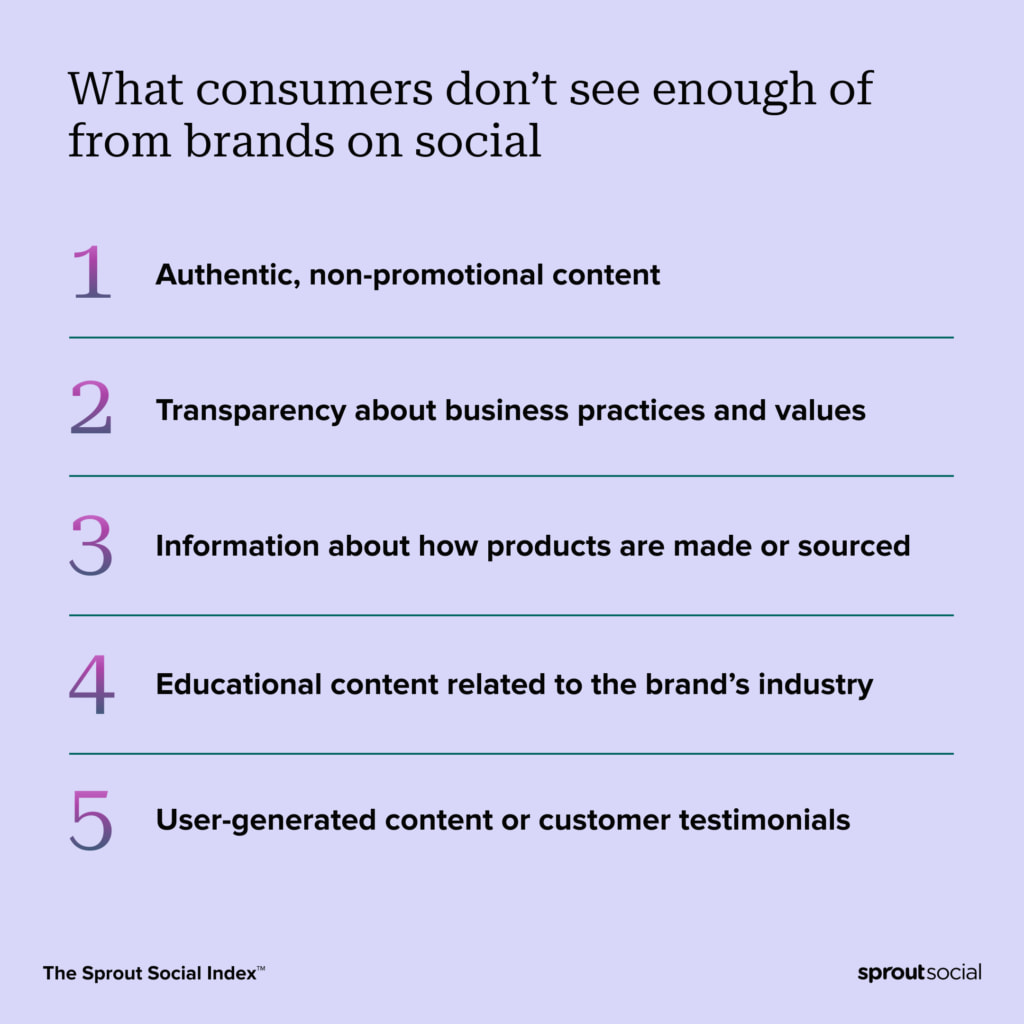
Whatever you do, be sure to keep things fresh. Repetitive posts may turn fans away. So change up your content.
Educational content:
- How-to tutorials and educational videos
- Industry insights and trend analysis
- Behind-the-scenes content showing expertise
Engaging content:
- User-generated content and customer stories
- Interactive polls, quizzes, and Q&As
- Live streaming and real-time engagement
Brand-building content:
- Employee spotlights and company culture
- Community contests and challenges
- Trending topics relevant to your industry
As you develop your content plan, consider how each piece contributes to your overall owned media value. One effective approach is to build it around several core social media content pillars, which are the key themes you’ll consistently talk about.
The best way to know what content types and formats will work for you is to dig into your data. Looking at your most successful posts will help you decide what to create. For example, Sprout’s Post Performance Report enables you to analyze your most successful posts across all of your channels, sorted by your top metrics.
7. Build a content calendar
Once you know what performs best and you’ve identified your primary goals, it’s time to build a social media content calendar. A calendar will let you take a big-picture approach to your social media content plan. It’ll help you visualize your ideas and organize them, making your strategy easier to execute. Your content calendar will be a hub for everything you post.
When planning content, don’t be afraid to repurpose content and schedule it across different platforms to get the most out of it. When deciding where to post what content, also consider what performs well on the platform based on your audit.
To help you visualize your ideas and organize them effectively, utilizing a specialized social media planner can make your entire content strategy easier to execute.

Keep in mind, there are best practices when it comes to the best times to post on each platform. If you want to make finding the right posting times easier, try Sprout’s Optimal Send Times tool. It collects data from your followers and puts together reports that tell you when you post to achieve the most reach.

Your strategy will involve the collective knowledge of a lot of different people within your organization. A content calendar makes it easier to collaborate on social media posts with different people across your company. This also aids in cross-team collaboration to create a more well-rounded plan.
Many teams find that starting with social media templates for common post formats helps maintain a consistent output while freeing up time for more strategic tasks.
8. Integrate influencer partnerships
A great influencer marketing strategy can’t live in isolation from a brand’s overall social media strategy, and vice versa. If you want the two to thrive, they need to work in harmony.
Your social media content plan can serve as a tool that keeps both strategies aligned. After all, influencer content should complement what’s shared on your brand channel’s as well as your business’s marketing goals. It can also help fill gaps in your social content calendar.
For example, say your team doesn’t have the bandwidth needed to keep up with short-form video production. According to Sprout’s 2024 Influencer Marketing Report, influencers prefer creating short-form video content for brands. You can rely on influencer collaborations to ensure a steady flow of content, alleviating some of your production needs—but only if you plan ahead.
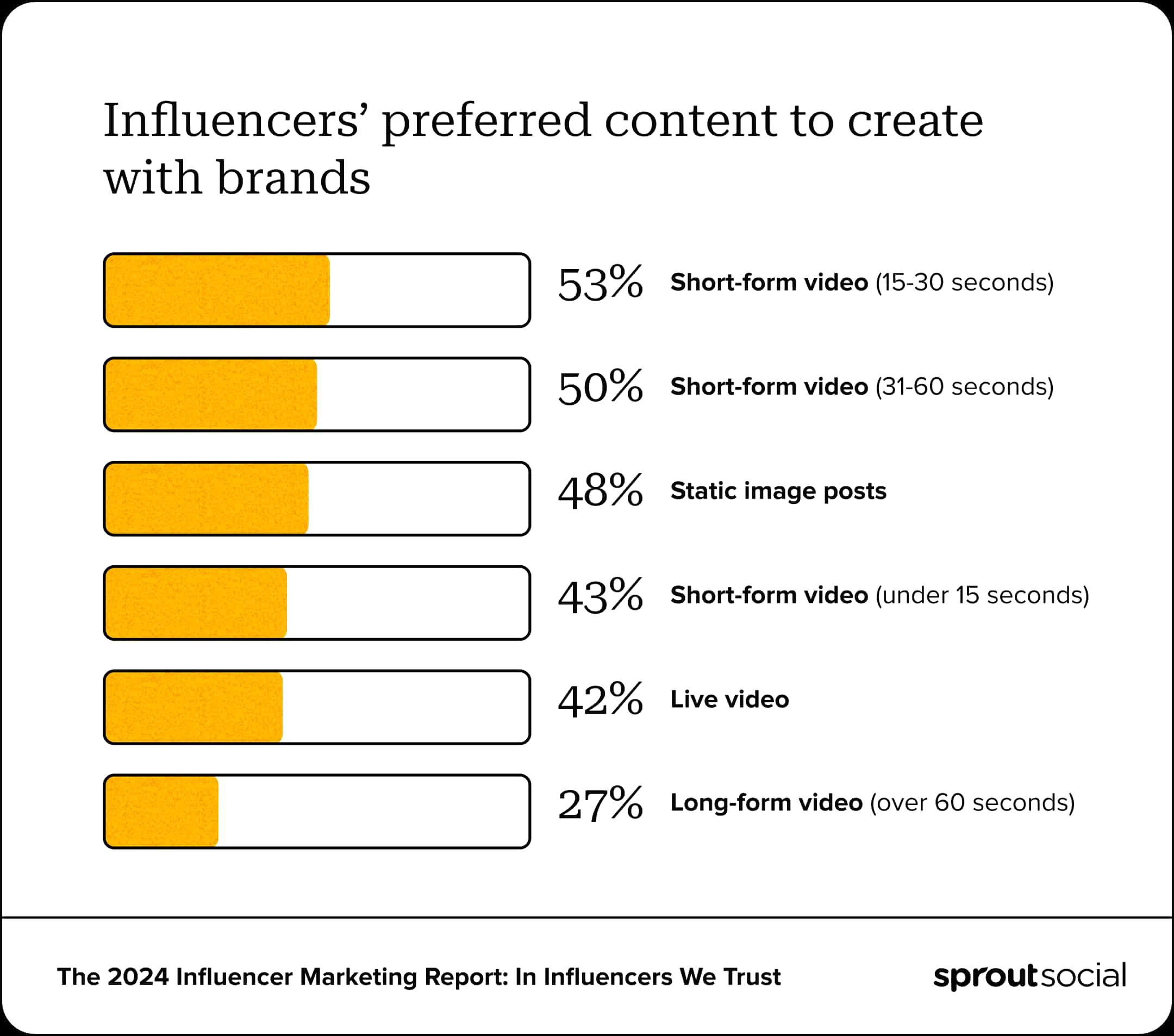
9. Promote and distribute your content
Your overall social media strategy goes beyond what you post on your social channels. A good strategy involves finding ways to actively distribute your content to maximize brand awareness. Here are a few ways to plan your distribution:
Schedule your content ahead of time
Social media tools, like Sprout’s scheduling and publishing features, make content distribution a no-brainer—especially if you post multiple times a day, like Netflix does on X. Plus, this helps you post at the right time.
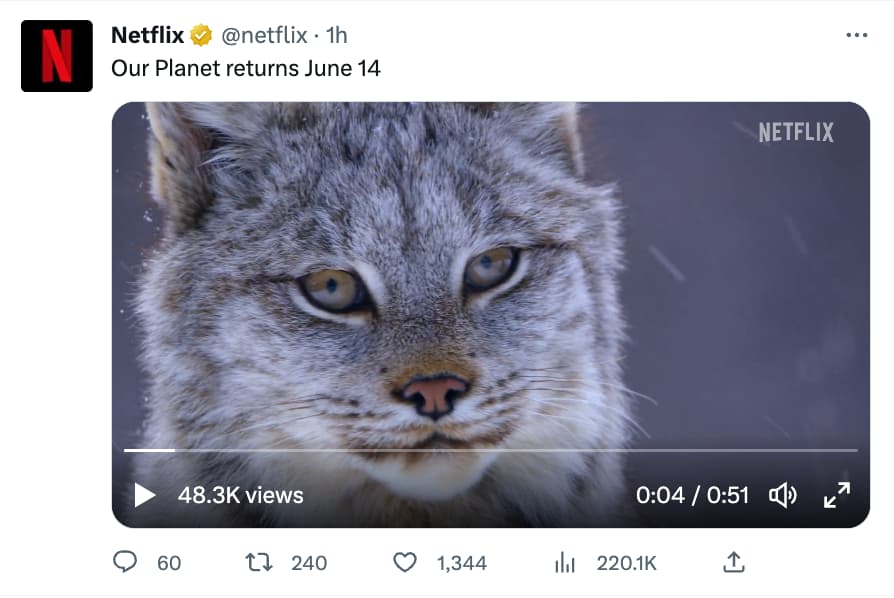
Recognizing when your audience is active and sharing posts at the right time will help you reach more people. If you’re only posting on social media the minute content goes live, you’re missing out on a massive opportunity to optimize your reach.
Encourage others to share your posts
Other people sharing your content is excellent social proof as well. Your social media content strategy should include responding to or reposting people who share your content. Encourage your audience to engage with your content by asking a question and encouraging them to share their answers, on social media or in the comments section of a blog post.
And leverage your company’s employees to spread the word. An employee advocacy strategy can drastically increase the reach of your company’s content. Employees are, in a way, “influencers” for your brand. A tool like Sprout’s Employee Advocacy platform enables you to scale your program, and integrates your advocacy workflow into your social workflow seamlessly.
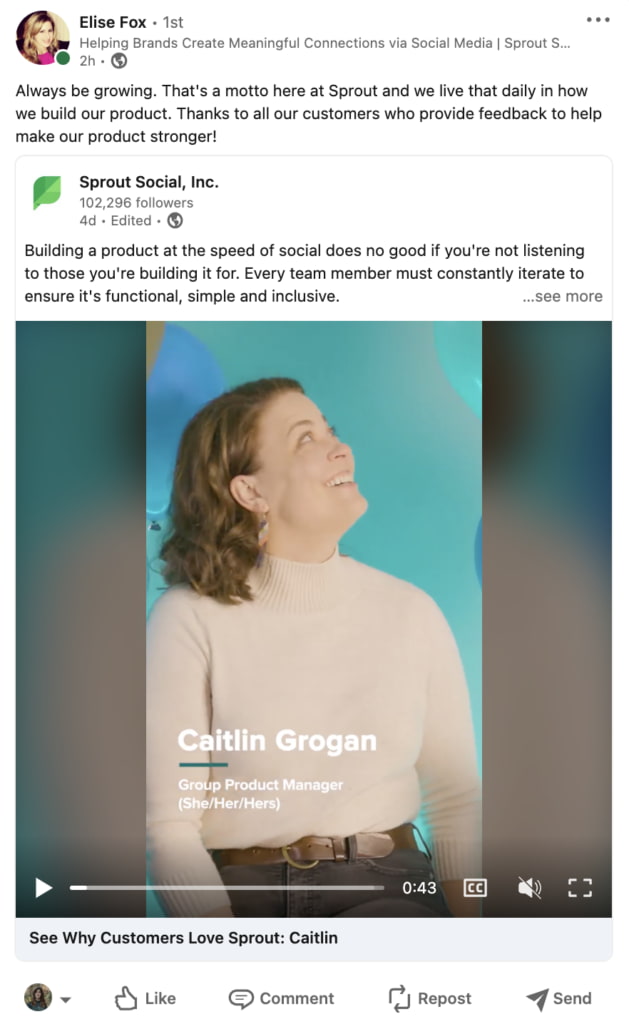
Use platform-specific features
Individual social media platforms have ways to help you maximize reach, as well. On platforms like X and Instagram, using hashtags is a great way to distribute your content further. Hashtags help you reach people who not only follow you but are following a specific trend or interest. On LinkedIn and Facebook, join groups related to your industry and share content when it relates to the conversation.
10. Measure results
The last step to an effective social media content strategy is measuring the results. Proper tracking is vital to creating a strategy with longevity. Keeping detailed metrics will help you tweak and optimize your plan over time.
You can also use your results to A/B test types of content. The Atlanta Hawks, for example, tested whether polished or more casual videos performed better on social. They discovered that casual content was a winner for them.

Analyze your content every month to keep track of what’s working. Take a top-level view of how each piece of content performed and the variables that contributed to it. Assess how well the content supported the goals you set in step one.
Essential metrics by business goal:
- Brand awareness: Track impressions, reach, and share of voice to measure visibility growth
- Community engagement: Monitor comments, shares, saves, and time spent viewing content
- Business impact: Measure click-through rates, conversions, and revenue attributed to social media
If you’re using a social media management platform like Sprout Social, you can look at all of your social media data and analytics in one place. My Reports, part of Sprout’s Premium Analytics, lets you add multiple charts, tables and visualizations–like bar and line charts–to a single report, so you can compare performance across a number of networks and deep dive on the metrics that matter to you most.

11. Free social media content strategy templates
When it comes to enhancing your strategy or building an entirely new one, getting started is the hardest part. So we have a number of social media content strategy templates to help you dive in right away.
Use these templates to grow your strategy:
Content strategy templates
- (Template) Creating a 30-day social media plan
- (Template) Conduct a Social Media Audit to strengthen your strategies
- (Worksheet) How to Conduct Social Media Market Research in 90 Minutes or Less
- (Checklist) 6 Steps to Launching an Employee Advocacy Program Your Team Wants to Participate In
Content templates
- (Tool) Find the ideal social media content mix for your brand
- (Worksheet) Creative Testing on Social Media
- (Workbook) Maximize the Value of Your Social Media Video Content
Reporting and analytics tracking templates
- (Template) The Social Media KPI Template + Guide
- (Template) The Social Media Analytics Spreadsheet for Paid and Organic Reporting
- (Toolkit) Creating a Social Media Report to Share With Your Boss
12. Putting it all together: craft your social media content plan
Effectively planning a social media content strategy is an ongoing cycle, but it doesn’t have to be overwhelming. Plan your process with the ideas and resources above and stick to these essential strategic steps to develop great content.
Streamline your entire strategy and set yourself (and your channels) up for long-term success by trying Sprout Social free for 30 days. From measuring content and scheduling posts at optimized times to facilitating employee advocacy, Sprout will help you manage and scale your strategy end-to-end. CHAECK IF IT WORKS
Social content strategy FAQs
What is the 70/20/10 rule for social media?
The 70/20/10 rule is a content strategy framework that allocates your social media posts into three categories: 70% of content should be educational or entertaining to provide value to your audience; 20% should be curated content from other sources to nurture connections; and 10% should be dedicated to direct brand promotion.
What is the difference between a social media strategy and a content calendar?
A social media strategy is the overarching, big-picture plan that defines your goals and how you’ll achieve them. The content calendar is the tactical, day-to-day schedule of what to post, when to post, and on which platform.
What is the 50/30/20 rule for social media?
The 50/30/20 rule is a content balancing guideline. The more widely accepted definition is: 50% of content is for audience engagement and entertainment, 30% is for informing and educating the audience, and 20% is for direct brand promotion.
How do I measure the success of my social media content strategy?
You can measure success by tracking metrics that align with your goals. This could include engagement rate (likes, comments, shares), reach and impressions, click-through rate to your website, and conversion rates from social media.
What's the ideal content mix for B2B versus B2C brands?
B2B (business-to-business) content excels with informative, data-driven material like case studies and webinars, as the goal is to build long-term trust and establish expertise. B2C (business-to-consumer) content thrives on emotional connections and quick engagement through short-form videos, memes, and user-generated content.



Share